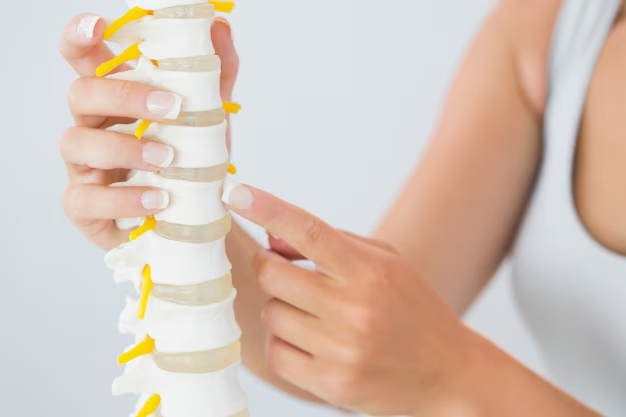Understanding Osteoporosis: Causes and Insights for Better Bone Health
Osteoporosis, a condition marked by weakened bones and an increased risk of fractures, affects millions worldwide. But what causes this silent disease? Let’s dive deep into the origins of osteoporosis, shedding light on its multiple causes and offering a broader understanding of how to maintain robust bone health.
The Biological Basis of Osteoporosis
The foundation of osteoporosis lies in the delicate balance between bone formation and bone resorption. Bones are living tissues, constantly being remodeled through the activities of osteoclasts (cells that break down bone) and osteoblasts (cells that form bone). When this equilibrium tips in favor of resorption, bones become thinner and more porous, leading to osteoporosis.
The Role of Age and Hormones
Aging is an inevitable factor that contributes to osteoporosis. As we age, bone resorption naturally exceeds bone formation, weakening the skeleton over time. Hormones, particularly estrogen in women, play a crucial role in maintaining bone density. The drop in estrogen levels during menopause significantly accelerates bone loss, which is why osteoporosis is more prevalent among postmenopausal women.
Genetic Factors and Family History
Genetics can predispose individuals to osteoporosis. If you have a family history of the disease, your risk is higher. Genes influence factors such as bone density, size, and structure, underlining the importance of genetic counseling and early screening for those with a family history of osteoporosis.
Lifestyle and Environmental Contributors
Lifestyle choices and environmental factors significantly impact bone health. By understanding these, individuals can make informed decisions to prevent or mitigate the onset of osteoporosis.
Nutritional Deficiencies
Calcium and Vitamin D are essential nutrients for bone health. Calcium is a vital component of bone tissue, while Vitamin D is crucial for calcium absorption. Inadequate intake of these nutrients can lead to diminished bone density. Diets lacking in fruits, vegetables, and dairy products can contribute to these deficiencies.
The Impact of Physical Activity
Regular weight-bearing and muscle-strengthening exercises stimulate bone formation. Sedentary lifestyles weaken bones, making them more susceptible to osteoporosis. Encouragingly, even at older ages, individuals can improve their bone health through appropriate exercises such as walking, jogging, or resistance training.
Smoking and Alcohol Consumption
Smoking and excessive alcohol intake are detrimental to bone health. Nicotine impairs blood flow to bones and reduces the body’s ability to absorb calcium. Alcohol, when consumed in large quantities, can interfere with bone formation and nutrient absorption, further exacerbating the risk of developing osteoporosis.
Medical Conditions and Medications
Certain medical conditions and medications can also contribute to the onset of osteoporosis. Understanding these will help you manage your health and discuss preventive measures with healthcare providers.
Autoimmune Diseases and Endocrine Disorders
Chronic inflammatory conditions like rheumatoid arthritis release cytokines that increase bone resorption. Endocrine disorders, such as hyperthyroidism, lead to an increase in bone turnover. Managing these conditions early can help mitigate their impact on bone health.
Medications That Affect Bone Density
Certain medications, such as glucocorticoids, thyroid replacements, and some antiepileptic drugs, can decrease bone density. If long-term use of these medications is necessary, discussing dosage and possible alternatives with a healthcare professional is crucial.
Strategies to Minimize Osteoporosis Risk
Understanding the multifaceted causes of osteoporosis highlights the importance of comprehensive prevention strategies to safeguard bone health.
The Power of Nutrition
Adopting a balanced diet rich in calcium and Vitamin D is foundational. Incorporate dairy products, leafy greens, nuts, and fish to ensure adequate nutrient intake. For those who cannot get enough from diet alone, supplements might be necessary, but these should be taken under medical advice.
Making Exercise a Priority
Regular physical activity tailored to your capabilities can prevent bone loss and improve balance, reducing fall risk. Start with simple activities like daily walks or join classes that focus on strength and flexibility. Engaging in sports or physical activities adapted to personal health conditions can provide both physical and social benefits.
Lifestyle Changes for Bone Health
Quit smoking and limit alcohol consumption. Both actions can vastly improve your overall health and contribute to healthier bones. Small, incremental changes create sustainable habits with a lasting impact.
Monitoring Bone Health
Regular bone density screenings, especially for those at higher risk due to age, family history, or underlying health conditions, are vital. Discuss with your healthcare provider the appropriate timing and frequency of these tests.
Embracing a Comprehensive Approach to Bone Health
Effective management and prevention of osteoporosis require a multidimensional approach. For individuals, this involves understanding their unique risk factors and taking proactive steps to mitigate them. For healthcare providers, it involves offering personalized advice that considers the patient’s lifestyle, medical history, and preferences.
Cultivating Awareness and Education
Spreading awareness and education about osteoporosis can empower individuals and communities to prioritize bone health. Workshops, seminars, and support groups can offer practical advice and foster a community of support.
Support Systems and Resources
Healthcare systems and community resources like dieticians, physiotherapists, and counselors can provide targeted support. Utilizing these can help individuals make informed decisions and maintain a high quality of life.
Quick Takeaways for Better Bone Health 🦴
- Early Detection: Regular screenings can catch osteoporosis early.
- Balanced Diet: Ensure adequate calcium and Vitamin D intake.
- Active Lifestyle: Incorporate weight-bearing exercises into daily routines.
- Risk Factors: Be mindful of medications and medical conditions affecting bones.
- Healthy Habits: Quit smoking and moderate alcohol consumption.
- Community Resources: Seek support through healthcare and community groups.
By understanding the causes and contributing factors of osteoporosis, individuals can take empowered steps to fortify their bone health, ensuring a more robust and active life.

Related Articles
- a Nurse Is Caring For a Client Who Has Osteoporosis.
- a Percutaneous Is Performed To Treat Osteoporosis Related Compression Fractures
- Can Alcohol Cause Osteoporosis
- Can I Do Pilates If I Have Osteoporosis
- Can I Reverse Osteoporosis
- Can Men Get Osteoporosis
- Can Osteoporosis Affect Teeth
- Can Osteoporosis Be Cured
- Can Osteoporosis Be Painful
- Can Osteoporosis Be Reversed